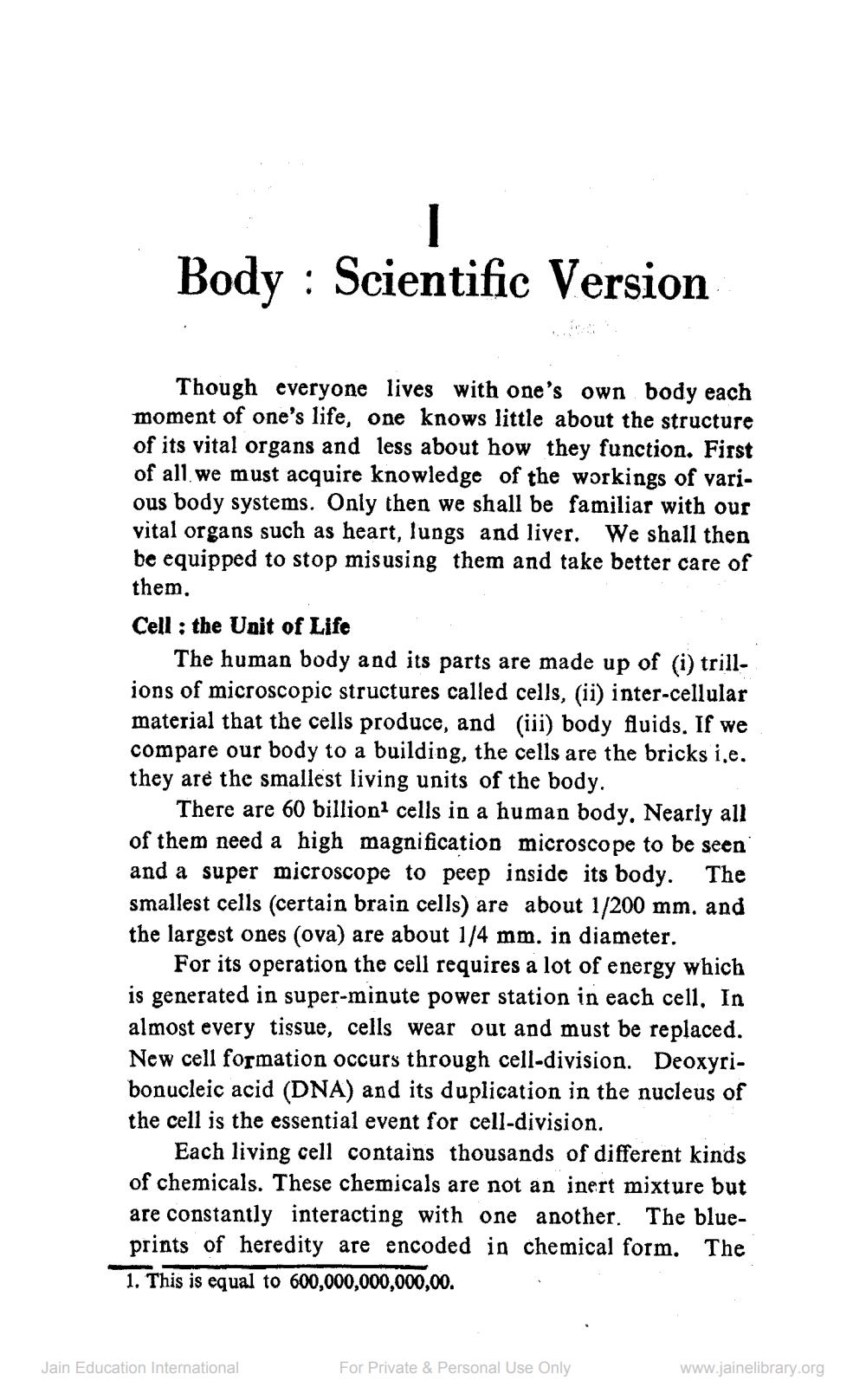________________
Body : Scientific Version
Though everyone lives with one's own body each moment of one's life, one knows little about the structure of its vital organs and less about how they function. First of all, we must acquire knowledge of the workings of various body systems. Only then we shall be familiar with our vital organs such as heart, lungs and liver. We shall then be equipped to stop misusing them and take better care of them, Cell ; the Unit of Life
The human body and its parts are made up of (i) trillions of microscopic structures called cells, (ii) inter-cellular material that the cells produce, and (iii) body fluids. If we compare our body to a building, the cells are the bricks i.e. they are the smallest living units of the body.
There are 60 billion cells in a human body. Nearly all of them need a high magnification microscope to be seen and a super microscope to peep inside its body. The smallest cells (certain brain cells) are about 1/200 mm. and the largest ones (ova) are about 1/4 mm. in diameter.
For its operation the cell requires a lot of energy which is generated in super-minute power station in each cell. In almost every tissue, cells wear out and must be replaced. New cell formation occurs through cell-division. Deoxyribonucleic acid (DNA) and its duplication in the nucleus of the cell is the essential event for cell-division.
Each living cell contains thousands of different kinds of chemicals. These chemicals are not an inert mixture but are constantly interacting with one another. The blueprints of heredity are encoded in chemical form. The 1. This is equal to 600,000,000,000,00.
Jain Education International
For Private & Personal Use Only
www.jainelibrary.org




